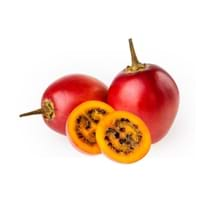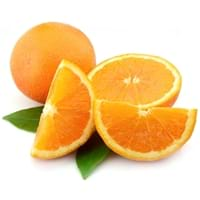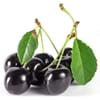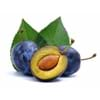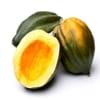Health Benefits
Cancer prevention, Improves eye vision, Prevents diabetes, Prevents high blood pressure
Arthritis treatment, Cancer prevention, Heart care
General Benefits
Cures inflamed tonsils, Helps in weight loss, Maintains healthy cholesterol level
Anti-inflammatory properties, Cures cough, Cures fever, Digestive aid, Healing of wounds, Maintains healthy cholesterol level
Skin Benefits
Anti-aging benefits, Protects skin from oxidative stress
Anti-aging benefits, Brightens and lightens complexion, Reduces wrinkles, Treatment of dark spots
Hair Benefits
Protects hair
Promotes longer and healthier hair, Protects hair, Rejuvenates scalp, Shiny hair
Allergy Symptoms
Anaphylaxis, Coughing, Diarrhea, Eczema, Hives, Itching sensation in throat, Nausea, Skin Rashes, Runny nose, Sneezing, Swelling of mouth, tongue or lips, Vomiting, Wheezing
Abdominal cramps, Hives, Itching, Nausea, Wheezing
Side Effects
Heart burn
Allergic reaction, Skin rash, Possibly unsafe during pregnancy
Best Time to Eat
Along with meal, As a snack in the late afternoon, Don't consume at night and before bed, Don't eat after meal, Morning time (before lunch)
As a snack in the late afternoon, Eat the fresh ones, avoid mixing with any other foods, don't eat after meal., Morning time (before lunch), Strictly avoid empty stomach
Vitamin B5 (Pantothenic Acid)
Vitamin C (Ascorbic Acid)
Vitamin K (Phyllochinone)
Phytosterol
Not Available
Calories in Fresh Fruit with Peel
Not Available
Not Available
Calories in Fresh Fruit without Peel
Calories in Frozen Form
Not Available
Not Available
Type
Fruit vegetable
Citrus
Season
All seasons
Winter
Varieties
Tamarillo bold gold, Tamarillo red beau, Tamarillo tango and Tamarillo teds red
Clementine, Dancy, King Mandarin, Murcott, Ponkan, Robinson, Satsuma and Sunburst
Color
Orange, Red, Yellow
Orange
Inside Color
Creamy Yellow
Orange
Taste
Tangy, Tart
Sweet-Sour
Origin
South Africa
South-Eastern Asia
Grows on
Trees
Not Available
Soil Type
Sandy loam, Well-drained
Well-drained
Climatic Conditions
Rainfall, Warm
Sunny
Facts about
- Up until 1967, tamarillos were referred to as tree tomatoes.
- The name tamarillo is derived from Maori word 'tama' which means leadership and rillo from spanish word 'amarillo' which means yellow.
- It is known by another name ' Mandarin'.
- Oil extracted from its peel is used in various skin and hair care products.
- Tangerines is also known as the ‘Christmas Orange’ because it is used to stuff kids' stockings..
Cocktails
Yes
Not Available
Top Producer
New Zealand
China
Other Countries
Australia, Chile, Colombia, Malaysia, Peru, Philippines
Brazil, Iran, Italy, Japan, Korea, Morocco, Spain, Turkey
Top Importer
United States of America
China
Top Exporter
New Zealand
Spain
Botanical Name
Solanum betaceum
Citrus reticulata
Synonym
tree tomato, genus Cyphomandra, Cyphomandra
Citrus clementina or Citrus nobilis
Subkingdom
Tracheobionta
Tracheobionta
Division
Magnoliophyta
Magnoliophyta
Class
Magnoliopsida
Magnoliopsida
Subclass
Asteridae
Rosidae
Order
Solanales
Sapindales
Family
Solanaceae
Rutaceae
Species
Solanum betaceum
C. reticulata
Generic Group
Nightshade
Citrus fruit
Compare Tamarillo and Tangerine
It is important compare Tamarillo and Tangerine as both the fruits have a different nutritional value. Their comparison can be done on the basis of their vitamin and mineral content, calories, benefits as well as characteristics, making it easier for us to choose the best fruit for our diet. Their general health benefits are as follows:
Tamarillo Benefits: cures inflamed tonsils, helps in weight loss and maintains healthy cholesterol level.
Tangerine Benefits: anti-inflammatory properties, cures cough, cures fever, digestive aid, healing of wounds and maintains healthy cholesterol level.
Fruits are also used as a remedy for various hair problems. The hair benefits of Tamarillo are: protects hair and hair benefits of Tangerine are: promotes longer and healthier hair, protects hair, rejuvenates scalp and shiny hair. Some fruits are known to cause allergic reactions. The allergy symptoms of first fruit are: anaphylaxis, coughing, diarrhea, eczema, hives, itching sensation in throat, nausea, skin rashes, runny nose, sneezing, swelling of mouth, tongue or lips, vomiting and wheezing and the symptoms of second fruit are: abdominal cramps, hives, itching, nausea and wheezing. Get sorted Tamarillo vs Tangerine comparison with the help of fruit comparison tool by fruitvs.com.
